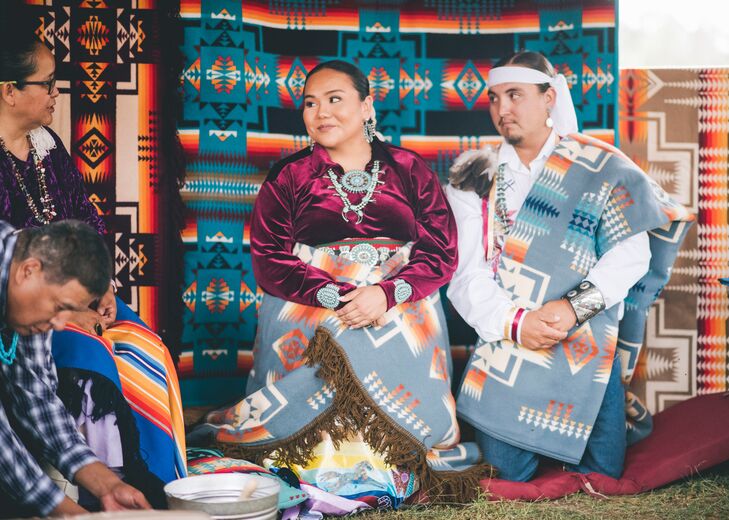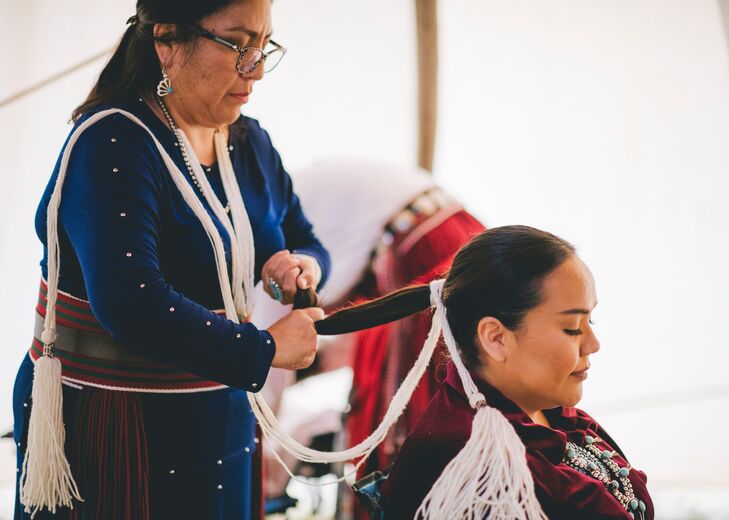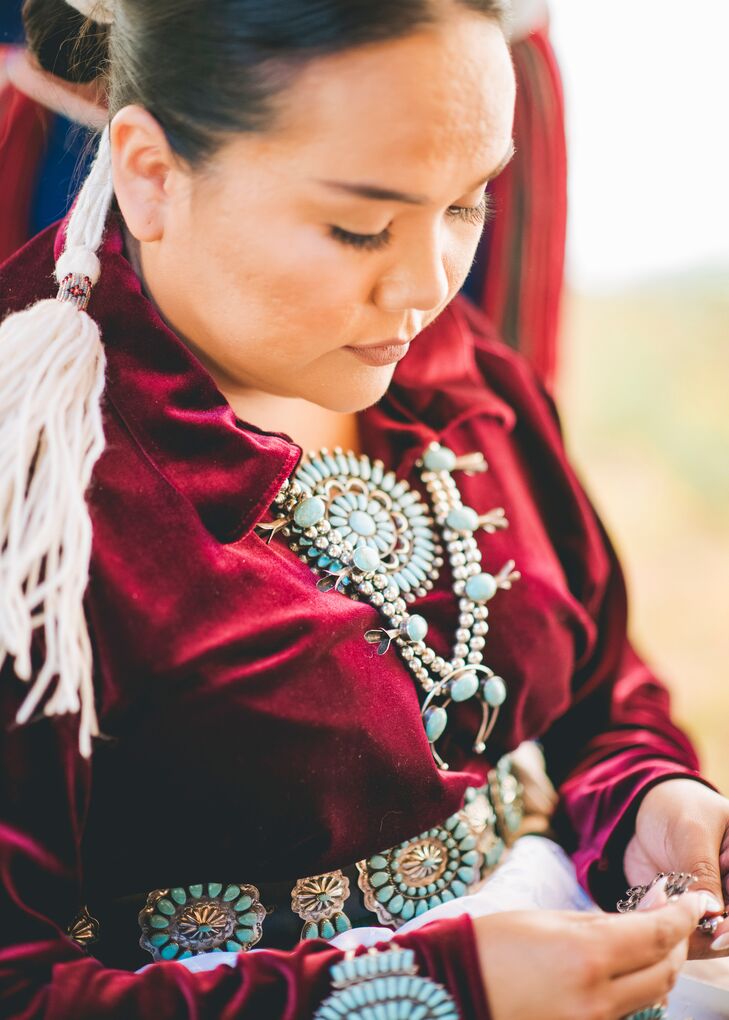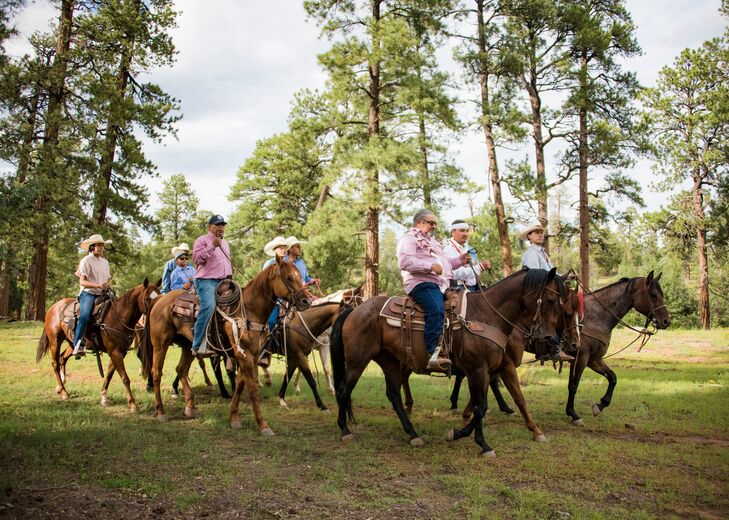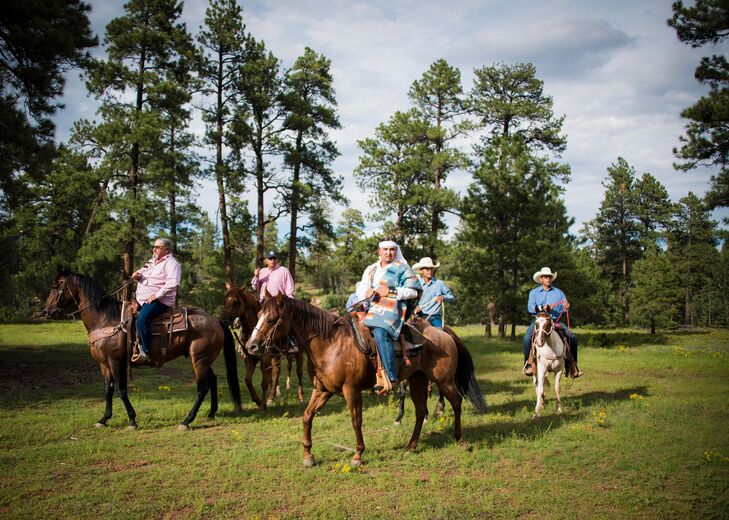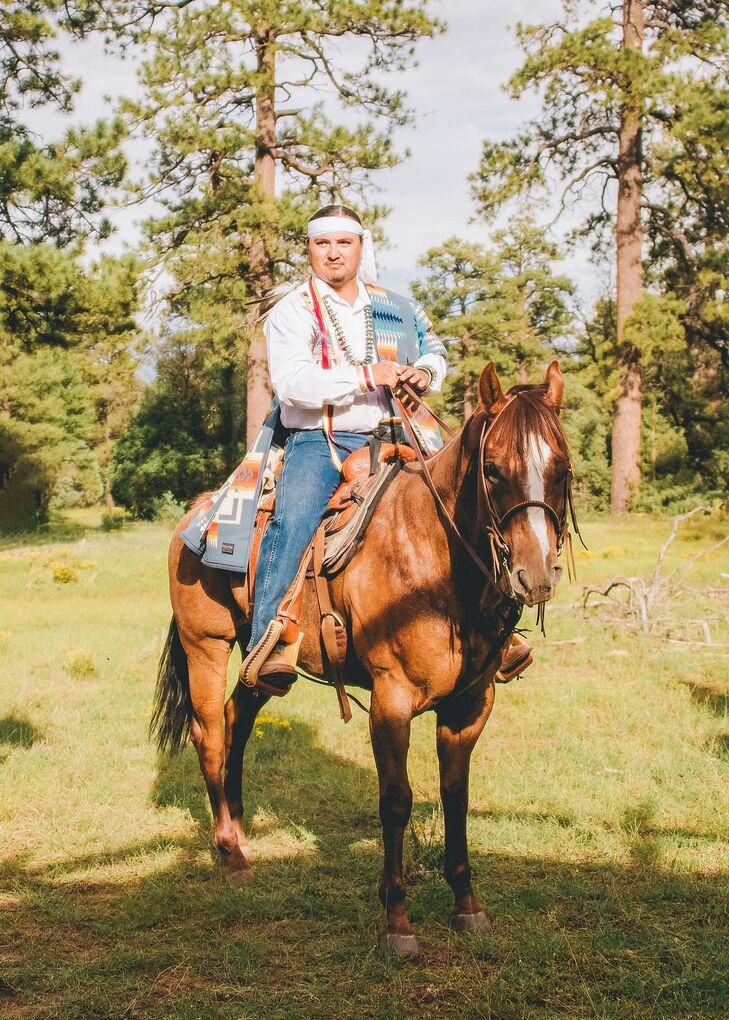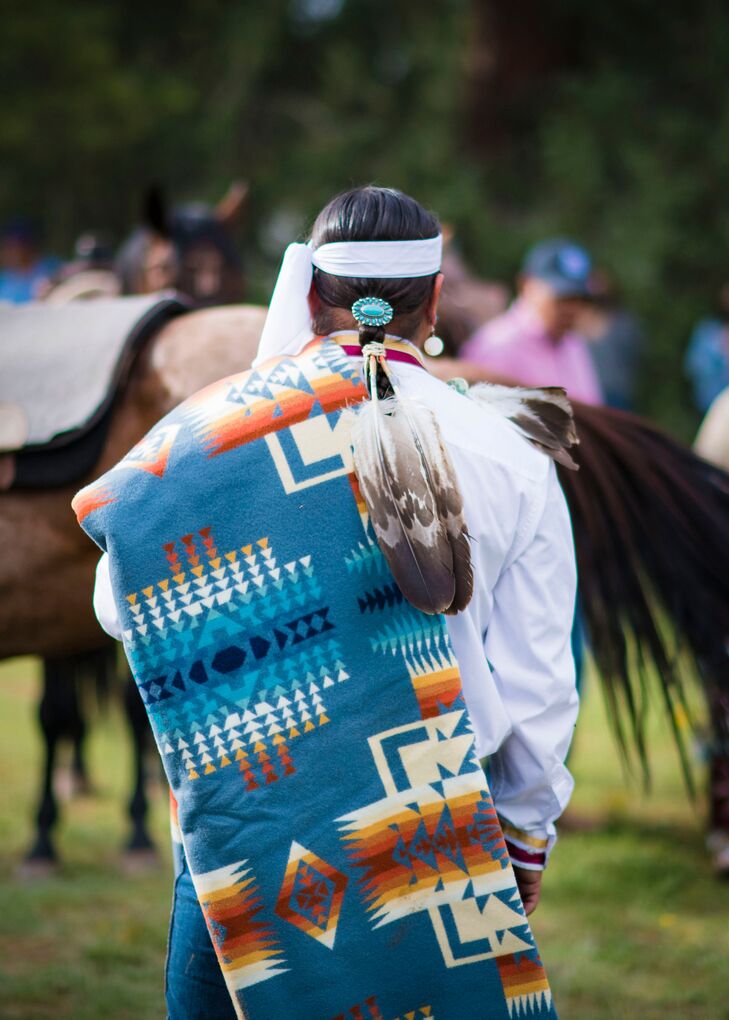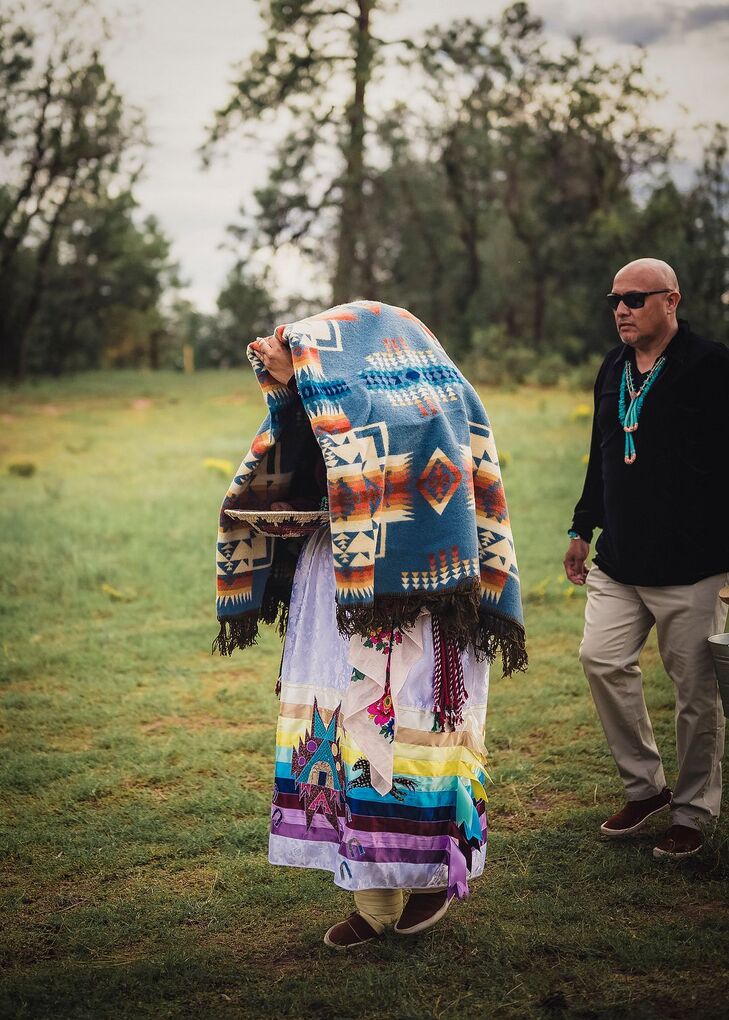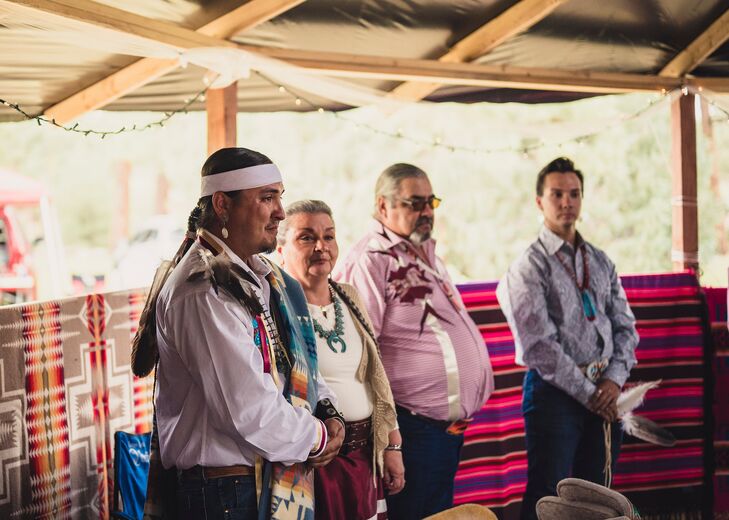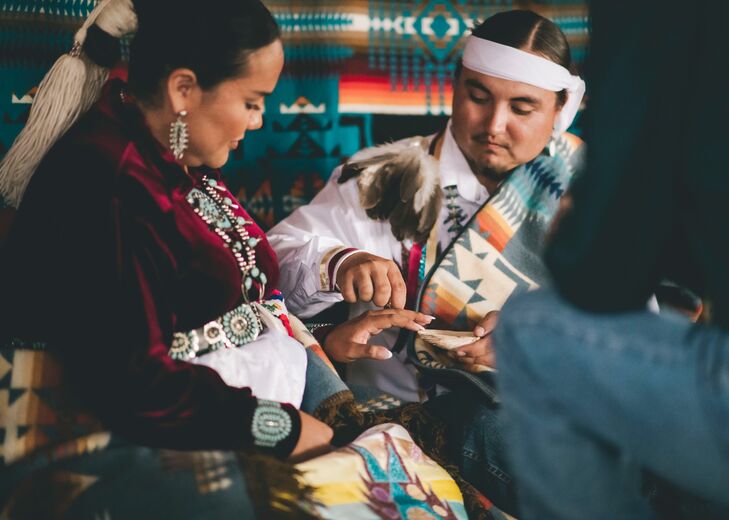Native American Customs Were Beautifully Honored at This Couple’s Traditional Navajo Wedding in Arizona
The roots of tradition, family and culture run deep within Brooke Overturf-Dalgai and Clay Morin. After a chance meeting at an Arizona State University graduation party—the groom attending as the brother of the graduate and Brooke making an appearance as a friend and fellow graduate—the two felt an instant and meaningful connection. When it came time to tie the knot and celebrate their love story, the couple elected to host a wedding that displayed customs from their respective tribes: the bride being an enrolled member of the Navajo Nation and the groom, a member of Turtle Mountain Band of Chippewa. Every part of the celebration was packed with personalization and symbolism, even down to the venue—the event was held on Brooke’s late great-grandparents’ homestead in St. Michaels, Arizona.
Brooke and Clay elected to have a bold color palette of burgundy, sage green and gold, pops of these hues were added into every aspect of their nuptials. The mother of the groom lovingly handmade her son’s white button-up shirt and moccasins, as well as the bride’s ribbon skirt prior to the ceremony. The skirt’s design, showcasing the Navajo hogan (a traditional, sacred dwelling) and teepee, represented the coming together of both tribes, and the horseshoe symbolizes always knowing where to find home. Brooke also donned a striking Navajo blouse in deep red, accented with intricate turquoise jewelry. “Most Navajo weddings only use a hogan to conduct the ceremony,” tells Brooke. “However, I was also raised in the Navajo American Church, which uses a teepee to conduct ceremonies.” For her big day, the bride chose to use a teepee as her “getting ready” location.
Keeping with tradition, the groom, his father, brother and a few more wedding guests rode into the celebration on horseback. Brooke’s face was covered during his entrance, but she could hear the excitement build as attendees greeted the party and snapped photos. Once dismounted, the bride’s father unhooked Clay’s saddle and walked it into the ceremony space, followed by the groom’s family. “When I took off the blanket, I saw happy tears in Clay’s eyes and I began to cry with him,” remembers Brooke. “I had never felt so much love from him by just looking into his eyes. It’s a moment we’ll never forget.”
The “I do” space was simply and subtly decorated with Pendleton blankets. Of the ceremonial traditions, the bride explains: “A traditional Navajo ceremony is similar to modern weddings—bride and groom don't see each other before the ceremony, wedding cake is served, guests bring gifts, etc. What makes the Navajo ceremony unique is the washing of each others’ hands and the eating of the corn mush. These two special moments are what unify the couple as one.” The mush sits in a Navajo basket, which is presented to the groom’s mother after the couple eats it. It’s said that the level of care the mother of the groom shows to the basket will be reflected in the couple’s marriage. Following prayers and a few words from both sets of parents, revelers enjoyed homecooked meals—courtesy of family and friends—and a four-tiered cake bedecked with patterns similar to the traditional blankets used throughout the day.
In contemplating words of wisdom they might impart to others planning their wedding, Brooke and Clay emphasize feeling your emotions. “Feeling overwhelmed, stressed, anxious and excited are all normal feelings during wedding planning. You’re not alone in all of this. It’s important to take a second to feel the excitement and happiness with your partner because you’ll reminisce about it a year from now.”
